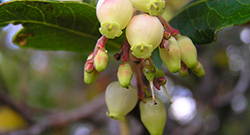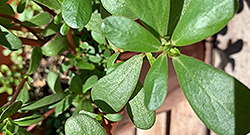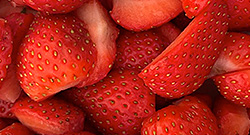Functional and Medicinal Plants

For centuries, we have drawn on the natural world's chemistry cabinet of health-giving flora, fauna, roots and fungi to improve the wellbeing of our population and to alleviate and cure our health problems. This process continues today with modern medicine and complementary therapies developing new treatments and using and re-visiting traditional remedies.
Our studies focus on the development cycle for medicinal plants and functional foods. The studies are from identifying the plants in the field, to isolating the bioactive components in the lab and developing new medicines and nutritional foods. |
 |
Nutritional profile

The plants contains chemical compounds, such as water, carbohydrates (sugar, starch, and fiber), amino acids (in proteins), fatty acids (in lipids), and nucleic acids (DNA and RNA). These compounds in turn consist of elements such as carbon, hydrogen, oxygen, nitrogen, phosphorus, calcium, iron, zinc, magnesium, manganese, and so on. All of these chemical compounds and elements occur in various forms and in the plant organisms that humans eat.
In FSLab we try to analyze each of them using spectrophotometrics, AA, HPLC and GC-MS analysis. |
 |
Bioactivity studies

Phytochemicals as Bioactive Agents focuses on the mechanisms of action of phytochemicals identified as displaying bioactivity in the prevention of cancer, heart disease and other diseases, and the prospects for developing functional foods containing these bioactive compounds.
Our studies also included strategies to identify bioactive phytochemicals in foods; the design, conduct and interpretation of clinical trials to test phytochemicals for expected bioactivity; compounds that have potential use as phytochemical antimicrobial agents (PAM) in food processing; and designing bioactive functional foods.
|
Gene expression

Gene expression refers to the molecular product of a particular gene and is another way of describing the phenotype. The phenotype of an organism is a result of the chemical interactions that are guided by the DNA (gene blueprint) for a specific polypeptide.
The focus of the present work conducted at FSLab is on the impact of light on flavonoids biosynthesis and on anthocyanins pigmentation for plant foliage, flowers and roots grown under different light intensities and light sources. The cDNA fragments of six genes from the flavonoid pathway, coding CHS, CHI, F3H, DFR, ANS, and UF3GT, have been isolated using PCR technique and sequenced.
|
|
Molecular Food

Functional food is a drink or food with allegation of some benefit to the health, based on evidences scientific and approved by competent authority. The main areas in the functional food production can be: development of new functional materials; processing in micron and nano-scales; development of products; methods and drawing of instrumentation for improvement of the security of foods. The industrial food production frequently needs the addition of functional ingredients. These are used to control aroma, color, texture or conservation, but more ingredients with potential for improvement of the health are enclosed each time. The addition of bioactive ingredients the functional foods presents many alterations, particularly with respect to the stability of the bioactive components during the processing and storage, being necessary to prevent interactions undesirable with the matrix of the food.
Our study concerned with all technical aspects of food, beginning with harvesting or slaughtering, and ending with its cooking and consumption. It is considered one of the life sciences and is usually considered distinct from the field of nutrition. |
|
Snail Caviar

Consumption of fish eggs is associated to a luxury, refined image and flair. Gastronomy quest for new subtle and delicate flavors lead to an exotic font of “white caviar”, snail Helix aspersa eggs. Land snails are a recognized healthy food due to its low fat content and presence of nutrients required for a well-balanced diet. However, no studies were published on the nutritional and antioxidant properties of land snail eggs. In collaboration with snail producer Quinta do Barranco (Algarve, Portugal). FSLab will perform a systematic analysis on nutritional and biochemical quality of a new food product in development, brined eggs of Helix aspersa.
The overall objective of this study is to contribute to our understanding of a new food product (snail caviar) in terms of chemical composition, antioxidant activity and the effects of is intake in colon cancer cells.
|

